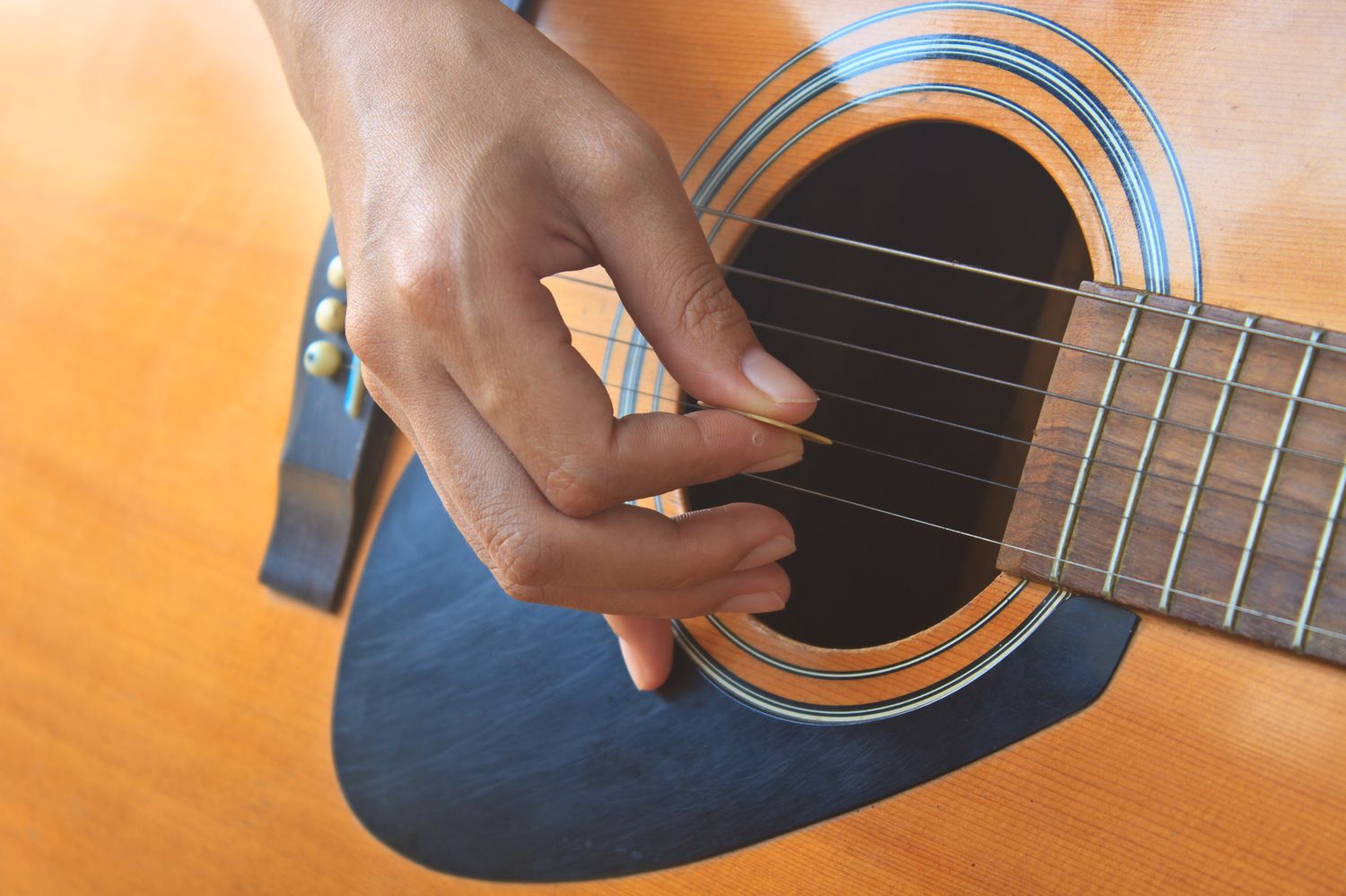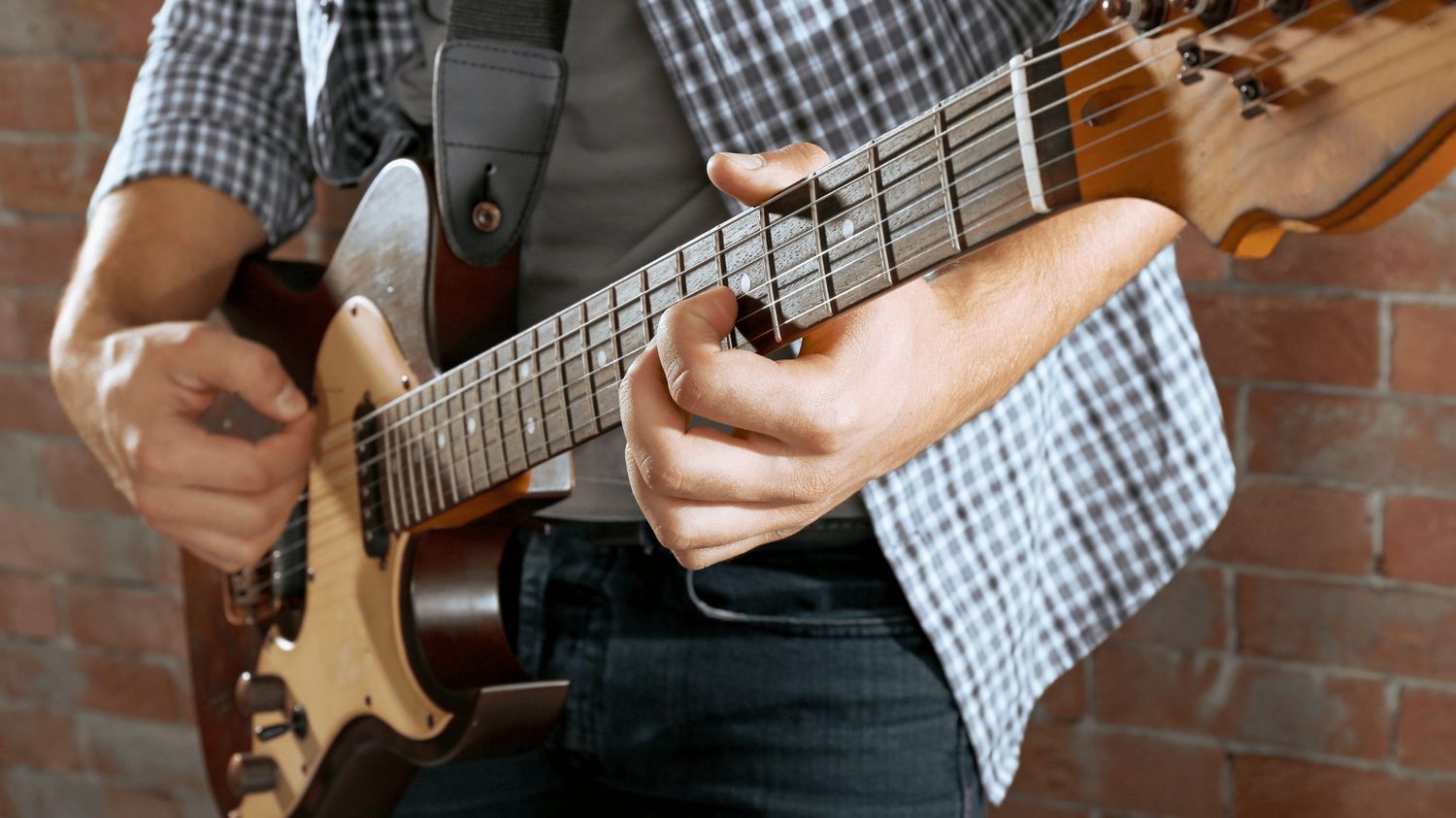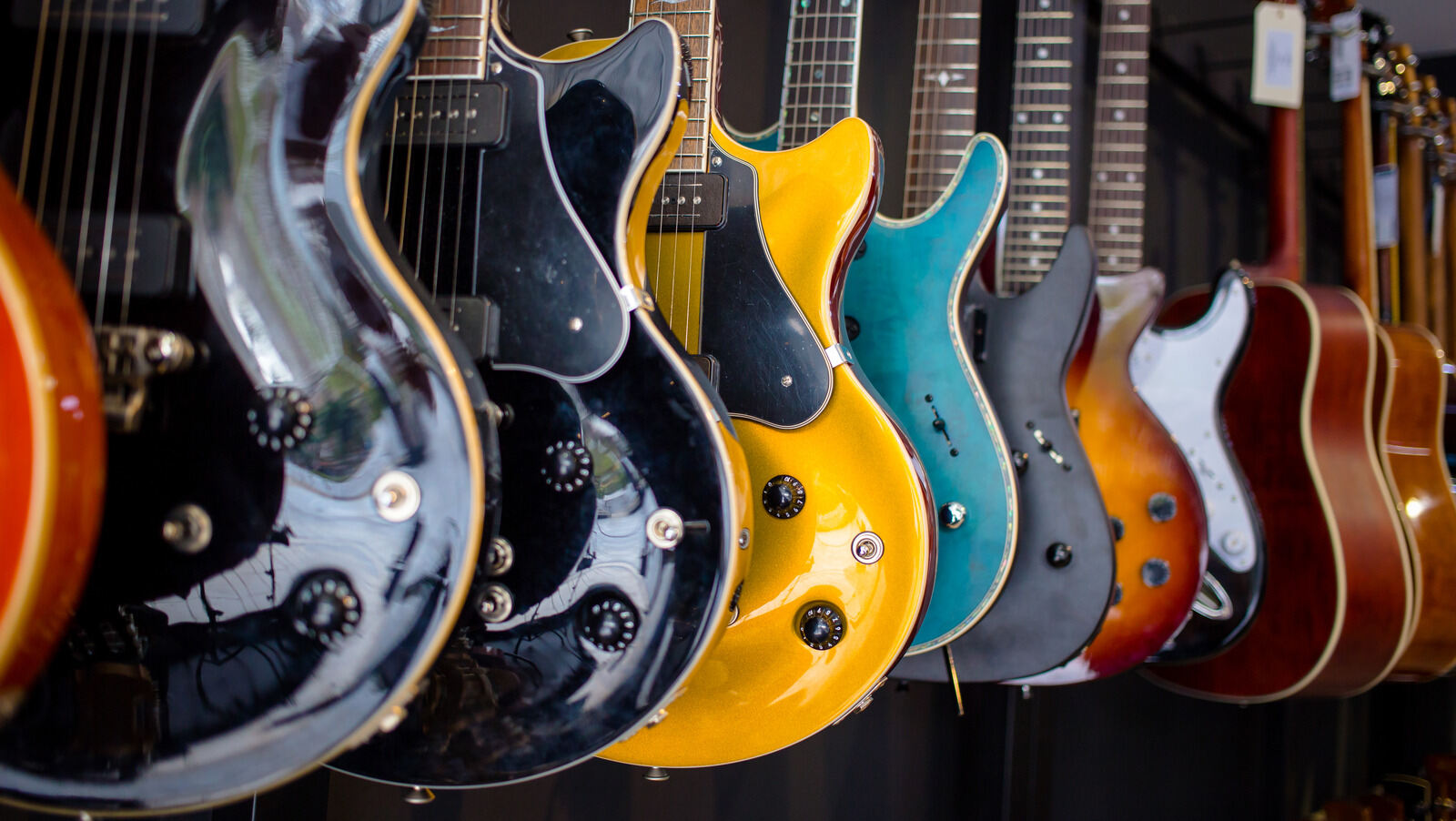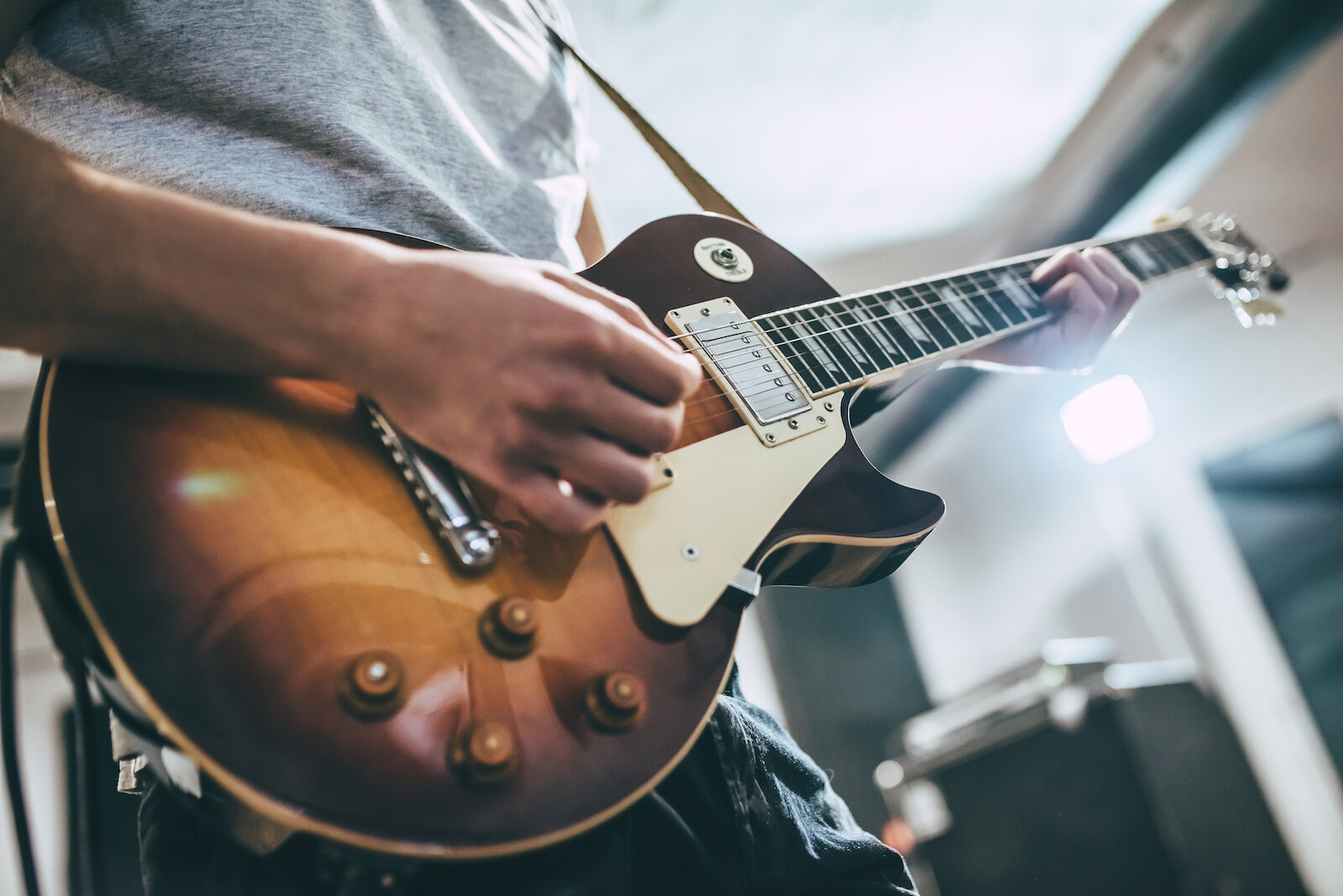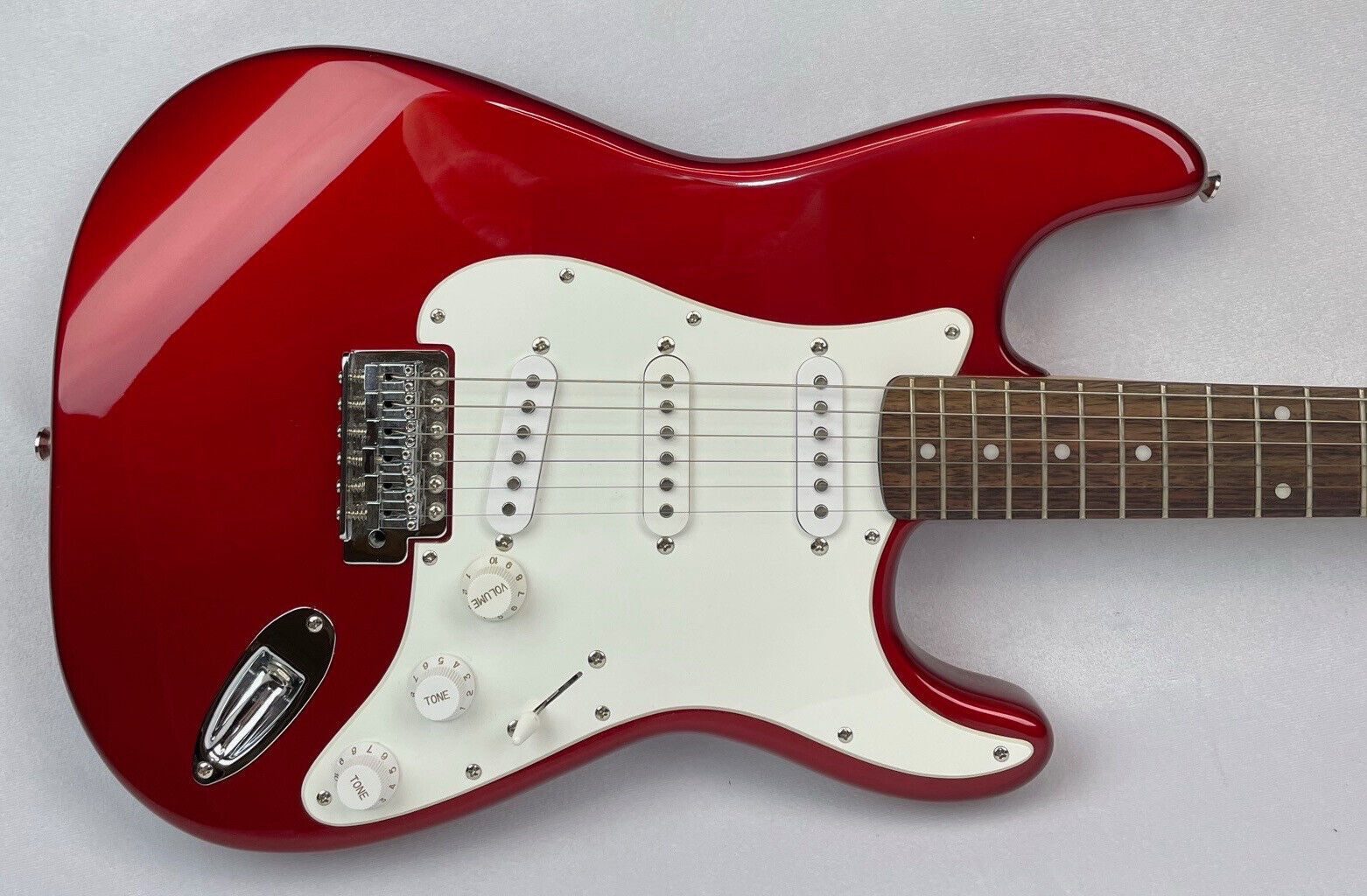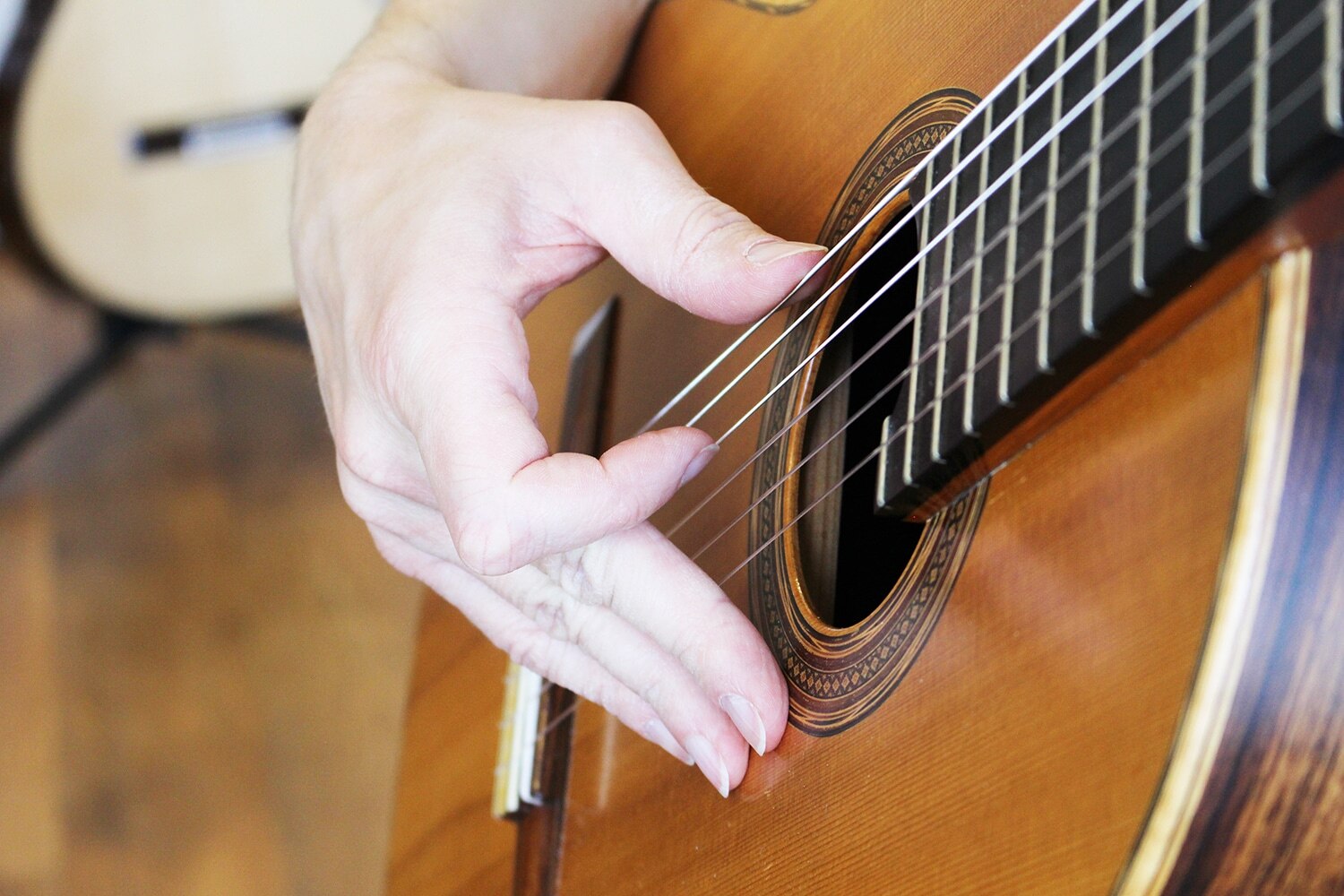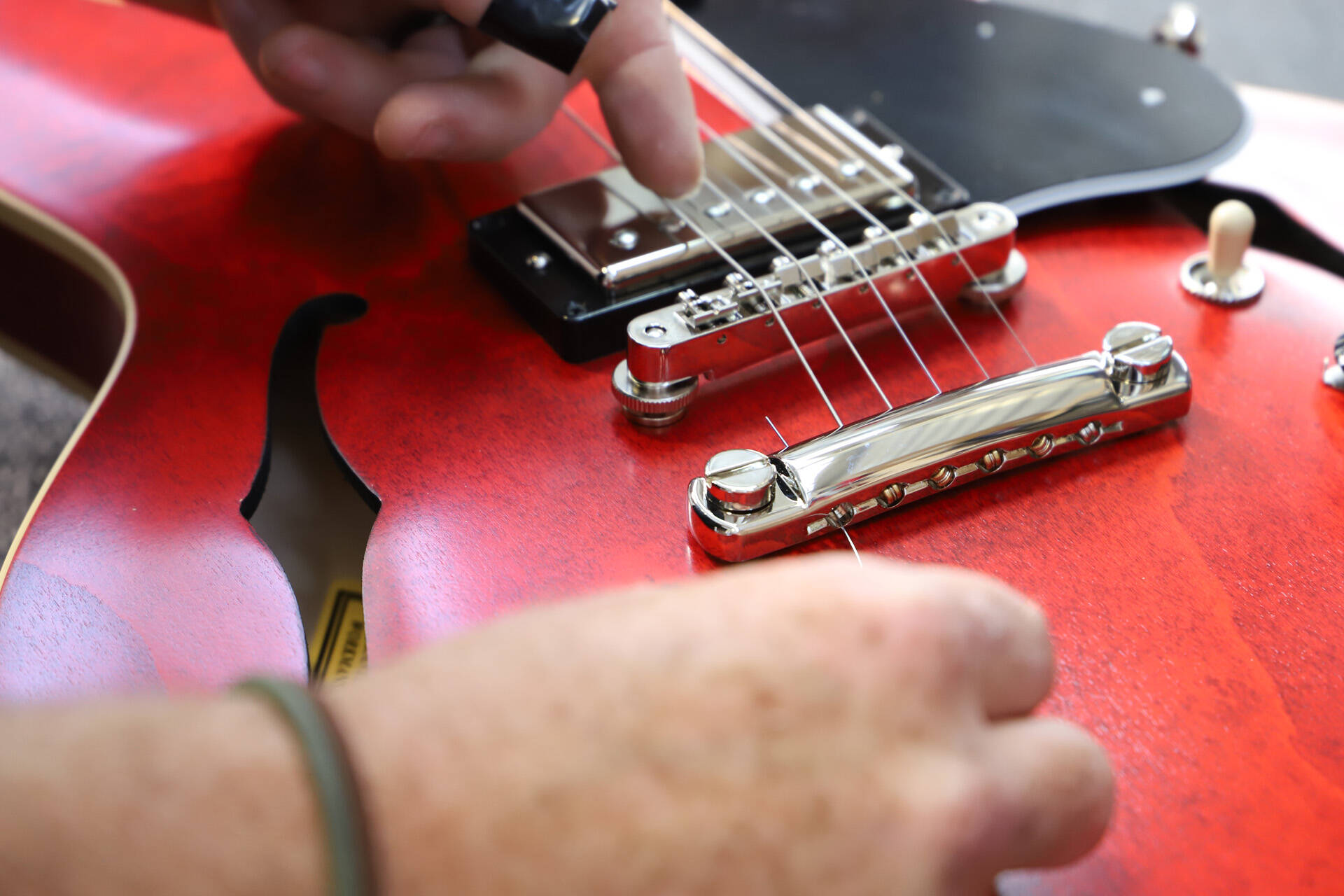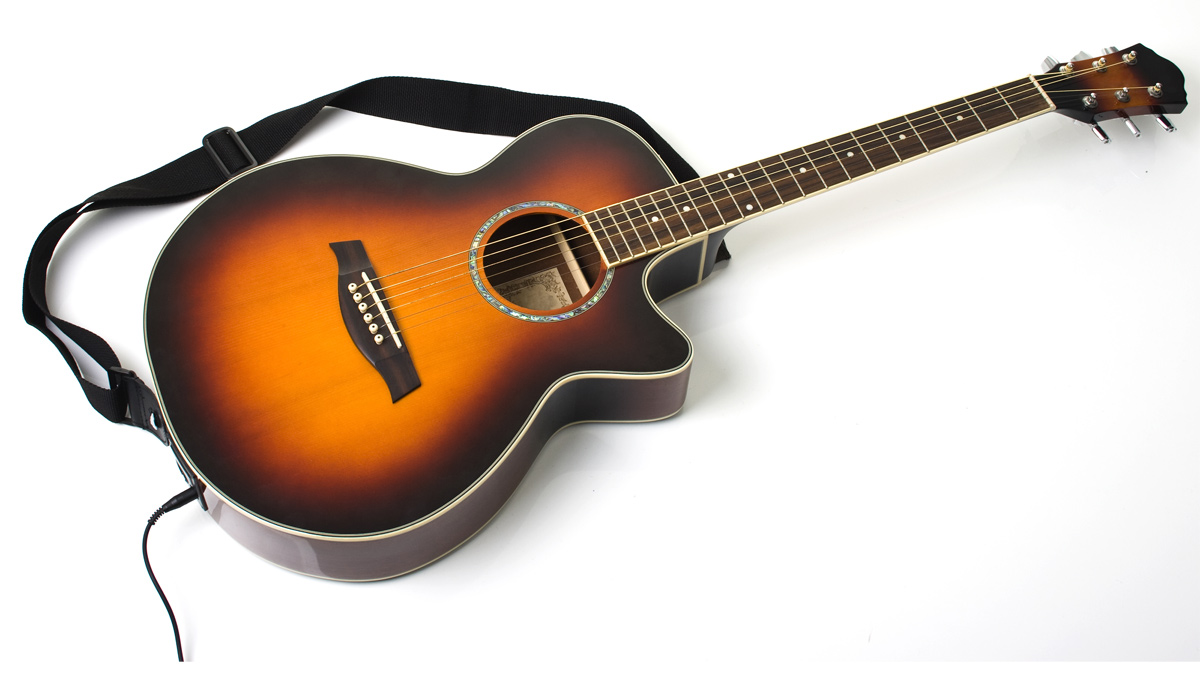Home>Instruments>Guitar>How To Hold An Electric Guitar


Guitar
How To Hold An Electric Guitar
Published: February 13, 2024
Learn the proper technique for holding an electric guitar to improve your playing comfort and technique. Discover essential tips and best practices for guitar positioning.
(Many of the links in this article redirect to a specific reviewed product. Your purchase of these products through affiliate links helps to generate commission for AudioLover.com, at no extra cost. Learn more)
Table of Contents
Introduction
So, you’ve decided to embark on a musical journey with the electric guitar? Congratulations! This versatile and dynamic instrument has the power to captivate audiences and unleash your creativity in ways you never thought possible. Whether you dream of shredding like a rock god, serenading with soulful blues, or grooving to funky rhythms, the electric guitar is your ticket to a world of sonic expression.
In this comprehensive guide, we will delve into the fundamental aspects of holding an electric guitar. From selecting the right instrument to mastering essential techniques, you will gain the knowledge and confidence needed to kickstart your guitar-playing adventure. Whether you’re a complete novice or transitioning from an acoustic guitar, this guide is designed to equip you with the insights and skills necessary to unleash the full potential of your electric guitar.
Holding an electric guitar is not just about finding a comfortable posture; it’s about establishing a connection with your instrument, allowing it to become an extension of your musical identity. By understanding the nuances of grip, finger positioning, and playing techniques, you’ll be well on your way to creating captivating melodies and electrifying riffs.
So, grab your guitar, plug in your amplifier, and let’s dive into the art of holding an electric guitar. Get ready to unlock your musical potential and embark on an exhilarating journey filled with rhythm, melody, and the sheer joy of creating music. Whether you aspire to strum gentle ballads or unleash thunderous power chords, the way you hold your guitar forms the foundation of your musical prowess. Let’s embark on this exciting adventure together and discover the secrets of holding an electric guitar like a seasoned pro.
Choosing the Right Guitar
Before delving into the intricacies of holding an electric guitar, it’s essential to ensure that you have the right instrument in your hands. The wide array of electric guitars available can be overwhelming, but fear not – with a bit of guidance, you can find the perfect match for your playing style and musical aspirations.
When selecting an electric guitar, consider factors such as body style, tonewoods, pickups, and hardware. The body style, whether it’s a solid-body, semi-hollow, or hollow-body, significantly influences the instrument’s resonance and overall sound. Solid-body guitars, such as the iconic Fender Stratocaster and Gibson Les Paul, are known for their versatility and sustain, making them suitable for various genres, from rock and blues to jazz and beyond.
Next, delve into the realm of tonewoods – the materials used for the guitar’s body and neck. Each tonewood imparts distinct sonic characteristics, so explore options like mahogany for warmth and sustain, maple for brightness and clarity, and alder for a balanced tonal profile.
Furthermore, the pickups, whether single-coil or humbucker, play a pivotal role in shaping your guitar’s sound. Single-coil pickups offer a bright and articulate tone, ideal for genres like blues and surf rock, while humbuckers deliver a thicker, more powerful sound, well-suited for hard rock, metal, and jazz.
Consider your playing preferences and the genres you wish to explore, as they will inform your decision regarding the guitar’s hardware, such as the bridge type, tuners, and controls. Whether you prioritize tuning stability, string bending comfort, or tonal versatility, the right hardware can elevate your playing experience.
Ultimately, the ideal electric guitar is one that resonates with your musical vision and inspires you to pick it up and play. Visit music stores, try out different models, and let your hands and ears guide you. Remember, the perfect guitar is not just about specs and features – it’s about the connection you feel when you hold it and the sounds that emanate when you play it.
By choosing a guitar that speaks to your musical soul, you set the stage for a fulfilling and inspiring journey with your instrument. Once you find the electric guitar that feels like an extension of your musical identity, you’re ready to dive into the next step: mastering the art of holding it with confidence and finesse.
Holding the Guitar
Now that you’ve found the electric guitar that resonates with your musical aspirations, it’s time to master the art of holding it with comfort and stability. The way you position and support the guitar forms the foundation for seamless playing, allowing you to channel your creativity and technique without unnecessary physical strain.
Begin by standing or sitting in a relaxed and upright posture, ensuring that your back is straight but not rigid. If you prefer to sit, a well-balanced guitar strap can provide additional support and freedom of movement. When standing, the strap should be adjusted to a length that allows the guitar to rest comfortably against your body, positioning it within easy reach of your fretting hand and strumming or picking hand.
Next, position the lower bout of the guitar against your dominant side – for instance, if you’re right-handed, the lower bout should rest against your right thigh. This placement facilitates easy access to the fretboard and ensures that the guitar’s weight is evenly distributed, reducing strain on your fretting hand and wrist.
As you cradle the guitar, ensure that the neck is angled slightly upward, allowing for smooth navigation across the fretboard. The headstock should be at a height that enables effortless tuning adjustments and minimizes the need for excessive wrist bending. Maintaining a balanced and relaxed posture while holding the guitar not only enhances your playing comfort but also contributes to a more fluid and expressive performance.
When seated, the body of the guitar should rest snugly against your torso, with the lower bout positioned on your thigh and the upper bout against your chest. This setup provides stability and allows for unhindered movement along the fretboard and across the strings. Additionally, it fosters a sense of connection with the instrument, enabling you to feel the vibrations and resonance as you play, further enhancing your musical experience.
Whether you opt for a casual sitting position or prefer the freedom of standing, the key to holding an electric guitar lies in finding a posture that supports your playing style and physical comfort. By establishing a relaxed and ergonomic grip on your instrument, you pave the way for hours of enjoyable practice and performance, allowing your musical creativity to flourish without the distraction of physical discomfort.
Now that you’ve honed your grip on the guitar, let’s delve into the intricacies of positioning your fingers on the fretboard, a crucial element in unlocking the instrument’s harmonic potential and unleashing captivating melodies.
Positioning Your Fingers
As you embark on your electric guitar journey, mastering the art of positioning your fingers on the fretboard is a pivotal step toward unleashing the instrument’s melodic potential. Whether you aspire to weave intricate solos, craft soul-stirring chords, or explore dynamic arpeggios, the way you position and maneuver your fingers shapes the very essence of your musical expression.
Begin by familiarizing yourself with the fretting hand – if you’re right-handed, this is typically your left hand. Align your thumb behind the neck of the guitar, resting comfortably and providing support without exerting excessive pressure. Your thumb’s position should allow your fingers to arch over the fretboard, enabling them to press down on the strings with precision and ease.
When fretting a note or chord, aim to position your fingertips just behind the fret wire, ensuring a clean and resonant sound when the string is plucked. Maintaining this placement minimizes the effort required to produce clear notes, allowing you to play with finesse and fluidity. Additionally, pay attention to the angle of your fingers – they should approach the strings from a perpendicular or slightly angled orientation, optimizing contact and minimizing unintentional string muting.
As you navigate the fretboard, strive to maintain a relaxed and natural curvature in your fingers, avoiding unnecessary tension or strain. This posture facilitates swift transitions between notes and chords, empowering you to explore diverse musical passages with agility and precision. Remember, your fingers are the conduits through which your musical ideas flow, so nurturing a comfortable and efficient fretting technique is essential for expressing your creativity with confidence.
When transitioning between chords or notes, focus on lifting and repositioning your fingers with minimal excess movement. Cultivating this dexterity enables seamless chord changes and fluid melodic lines, enhancing the coherence and expressiveness of your playing. Practice transitioning between different chord shapes and scale patterns, gradually building muscle memory and agility in your fretting hand.
Furthermore, be mindful of your fingernail length – excessively long nails can impede your ability to fret the strings cleanly, resulting in muted or buzzing notes. Keeping your nails at a moderate length ensures that your fingertips make direct contact with the strings, facilitating clear and resonant tones as you play.
By honing your finger positioning and fretting technique, you lay the groundwork for a seamless and expressive musical journey. Embrace the nuances of finger placement, cultivate dexterity, and revel in the joy of coaxing captivating melodies and harmonies from your electric guitar.
With a firm grasp on finger positioning, let’s explore essential strumming and picking techniques that will elevate your playing to new heights of rhythmic and tonal dynamism.
Strumming and Picking Techniques
As you delve into the realm of electric guitar mastery, honing your strumming and picking techniques is paramount to unlocking a rich tapestry of rhythmic and melodic possibilities. Whether you seek to infuse your playing with vibrant chord progressions, unleash scintillating solos, or explore intricate arpeggios, the way you wield your pick and navigate the strings shapes the very essence of your musical expression.
Begin by acquainting yourself with the pick – a small, flat tool held between your thumb and index finger. Experiment with various pick thicknesses and materials to discover the tonal nuances each option offers. Thinner picks produce a brighter and more articulate sound, ideal for intricate picking patterns, while thicker picks yield a fuller and more robust tone, suited for aggressive strumming and lead guitar work.
When strumming chords, maintain a relaxed grip on the pick, allowing it to glide smoothly across the strings with a fluid and controlled motion. Aim to strike the strings with a consistent and even force, producing a balanced and resonant sound. Practice strumming patterns at different tempos, gradually building precision and rhythmic dexterity in your playing.
For picking individual notes or executing lightning-fast solos, focus on holding the pick firmly but not tensely, allowing it to glide effortlessly across the strings. Experiment with alternate picking – a technique that involves using a downstroke followed by an upstroke – to cultivate speed and accuracy in your lead guitar phrases. As you navigate the strings, aim for a smooth and fluid motion, minimizing excess tension in your picking hand to facilitate nimble and expressive playing.
Explore the dynamics of your playing by varying the pressure and angle of your pick as it meets the strings. A gentle touch yields a delicate and nuanced sound, ideal for introspective passages, while a more assertive attack produces a bold and commanding tone, perfect for driving rhythms and emphatic lead lines.
Embrace the world of hybrid picking, which combines the use of a pick with the fingers of your picking hand, enabling you to seamlessly blend strummed chords with intricate fingerstyle passages. This versatile technique adds depth and texture to your playing, allowing you to craft multi-layered arrangements and explore a diverse sonic palette.
As you refine your strumming and picking techniques, remember that precision and expression go hand in hand. Cultivate a nuanced touch, explore diverse rhythmic patterns, and revel in the boundless potential of your electric guitar as you infuse your playing with depth, emotion, and rhythmic vitality.
With a firm grasp on essential strumming and picking techniques, you’re poised to embark on a musical journey filled with boundless creativity and sonic exploration. The way you wield your pick and navigate the strings forms the very heartbeat of your musical expression, empowering you to breathe life into captivating melodies, pulsating rhythms, and the sheer joy of creating music.
Conclusion
Congratulations on delving into the art of holding an electric guitar with confidence and finesse. By embarking on this enlightening journey, you’ve embraced the foundational principles that underpin a fulfilling and expressive musical experience. From selecting the perfect guitar to honing essential playing techniques, you’ve taken significant strides toward unleashing your creative potential and crafting captivating melodies that resonate with passion and vitality.
As you continue to explore the boundless horizons of electric guitar artistry, remember that the way you hold your instrument is more than just a physical posture – it’s a reflection of your musical identity and a conduit for your artistic expression. Embrace the nuances of finger positioning, cultivate dexterity and precision in your playing, and revel in the joy of coaxing vibrant harmonies and pulsating rhythms from your electric guitar.
Let your musical journey be guided by curiosity, perseverance, and a deep-seated love for the art of creating music. Whether you aspire to rock the stage with blistering solos, serenade intimate audiences with soul-stirring ballads, or explore the far-reaching realms of sonic innovation, the way you hold your electric guitar forms the very foundation of your musical odyssey.
As you navigate the intricacies of fretting hand technique, strumming, and picking, remember that each note you play is a brushstroke on the canvas of your musical expression. Embrace the joy of experimentation, celebrate the beauty of imperfection, and allow your playing to evolve organically as you immerse yourself in the art of holding an electric guitar with grace and confidence.
May your musical endeavors be filled with boundless inspiration, unwavering determination, and the sheer delight of creating music that resonates with your soul and captivates the hearts of all who listen. The journey of holding an electric guitar is a tapestry of discovery, innovation, and unbridled passion – embrace it wholeheartedly and let your music soar to new heights of beauty and resonance.
So, pick up your guitar, feel the weight of its body against yours, and let the music flow from your fingertips with an effortless grace that only comes from a deep connection with your instrument. Your electric guitar is more than just a musical tool – it’s a vessel for your emotions, a conduit for your creativity, and a companion on your journey through the wondrous landscape of musical expression.
Embrace the art of holding an electric guitar with reverence, joy, and an unyielding spirit of exploration. Let your music echo through the ages, carrying with it the essence of your soul and the boundless energy of your artistic vision. The world awaits the symphony that only you can create – so, hold your guitar with pride, let your passion guide your hands, and revel in the limitless possibilities that await your musical odyssey.

